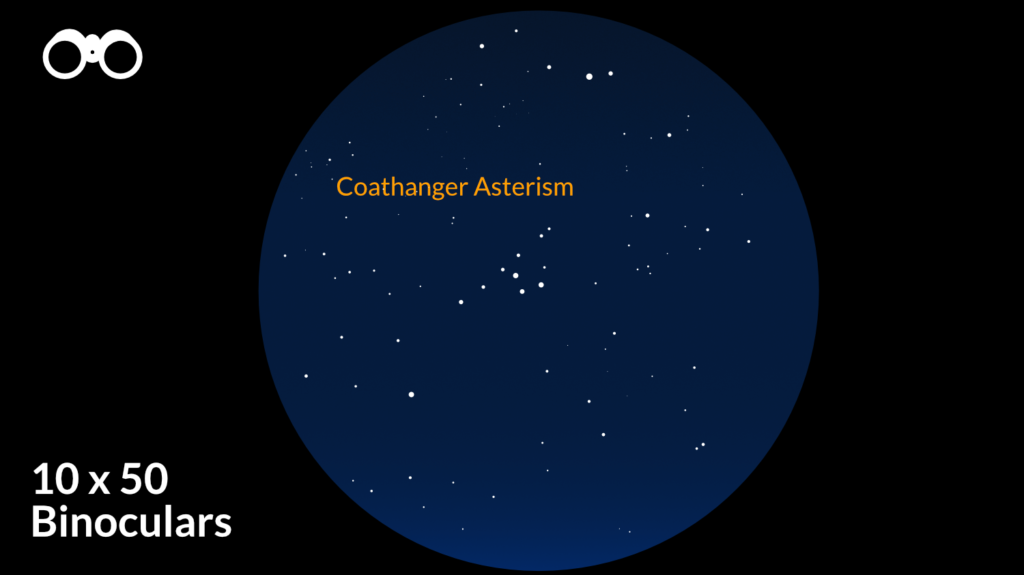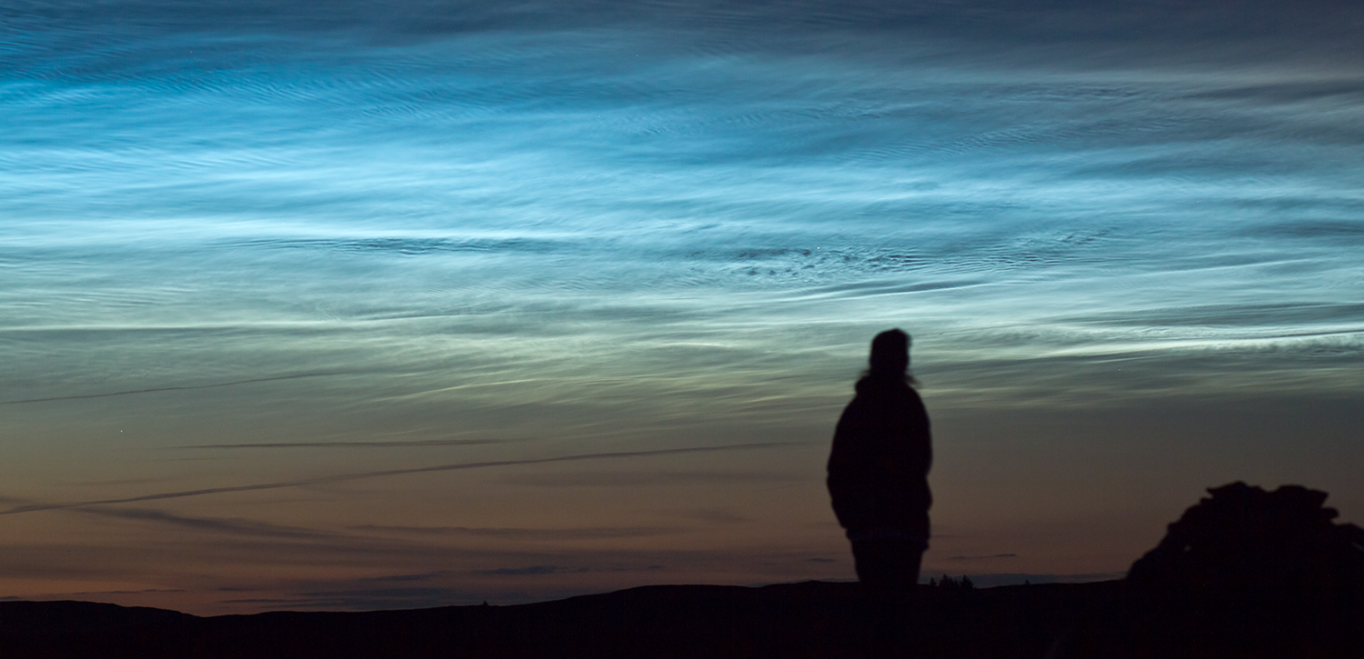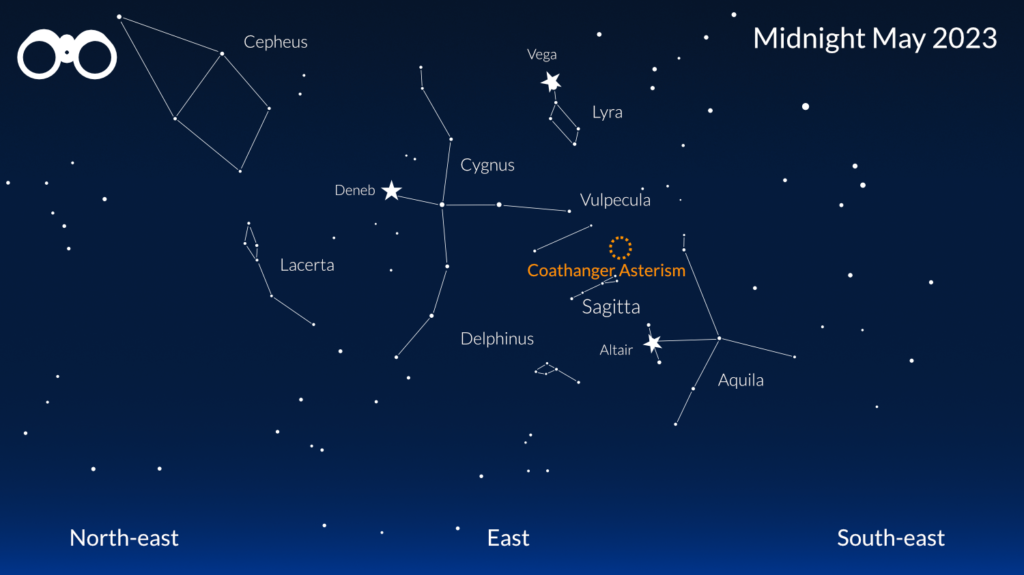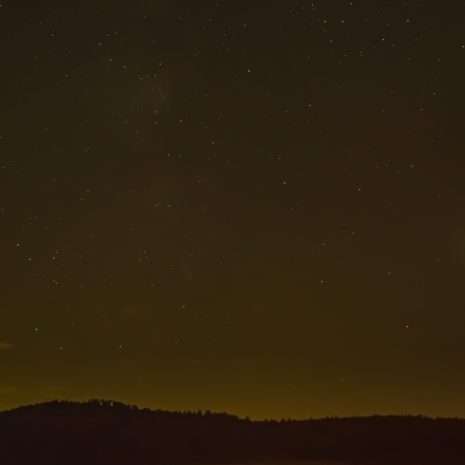As we move towards the late spring/early summer months, the dusk sky deepens to a deep blue twilight all night.
Scotland is the first country in the UK to lose the night in early May, followed by the lower latitudes, finishing with the south towards the end of May. This means that the nights don’t get dark enough to study deep sky objects such as galaxies, globular clusters and nebulae.
It’s a great time of year to branch out into other areas of visual study, such as the Moon and planets, whether you use your eyes, binoculars or even a small telescope.

May Constellations
The constellations of Gemini and Auriga sets in the west at around 10pm and Ursa Major is very well-placed at the zenith. Leo marches westwards during the month of May and Virgo takes pride of place in the south. The constellation of Corona Borealis (Northern Crown) is a wonderful array of stars to look out for in the eastern sky, resembling a C shape or a celestial crown.
You can download the printable constellation map from here (credit: Dominic Ford, author in-the-sky.org)
The Full Moon falls on 5 May and the New Moon on 19 May.
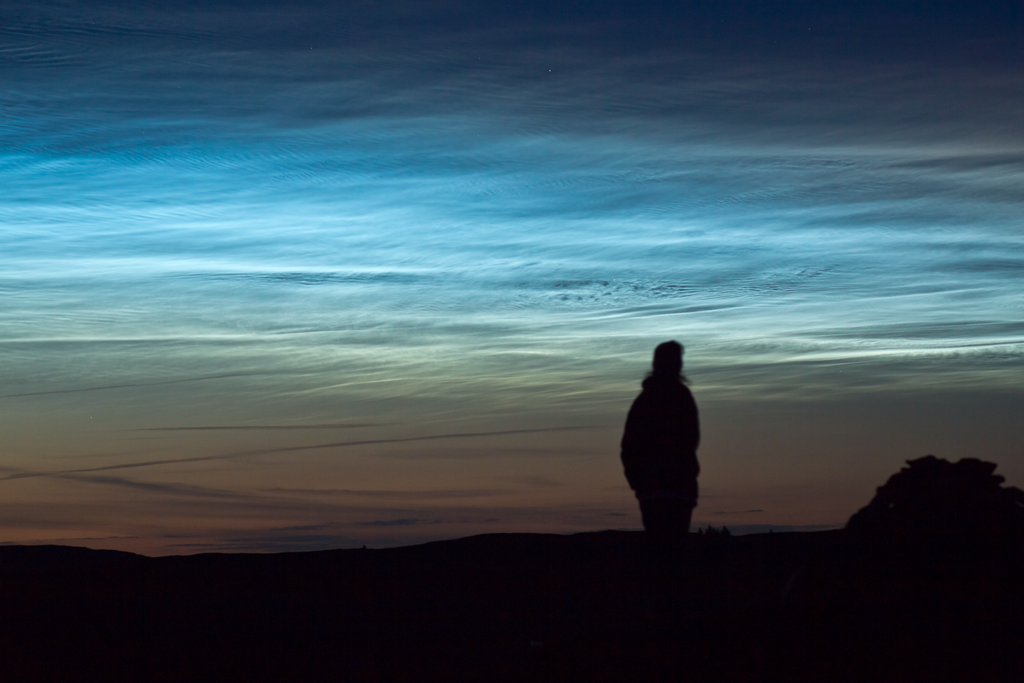
Noctilucent Clouds
Noctilucent clouds emerge into the night sky from the middle of this month so get outside when darkness falls and look north. They usually appear from 11pm-midnight and then a couple of hours before sunrise – they can be a stunning sight to behold. Also known as Polar Mesospheric clouds, these diffuse, high-latitude ice crystals are illuminated by the Sun, as it sets above 18 degrees below the horizon. This is why the summer nights don’t get fully dark. You can see the residual light cast by the Sun move as a light dome along the western horizon, along the north and to the east before rising.
The Moon
During the summer season the moon can provide a fascinating experience for the stargazer with interesting features to discover. When it is in phase, the mountains and craters cast shadows along the terminator – the area between light cast by the sun and the shadow of the moon which can look great in small telescopes under high magnification. The features on the Moon have designations and areas just like locations on Earth. Here are a few features to discover:
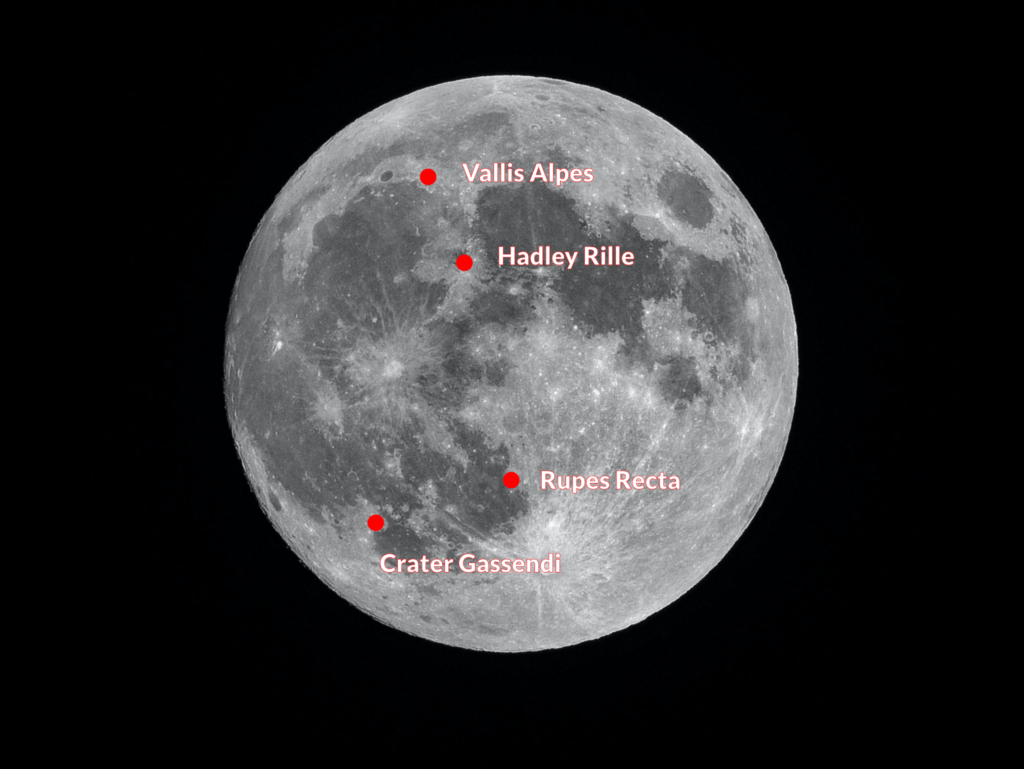
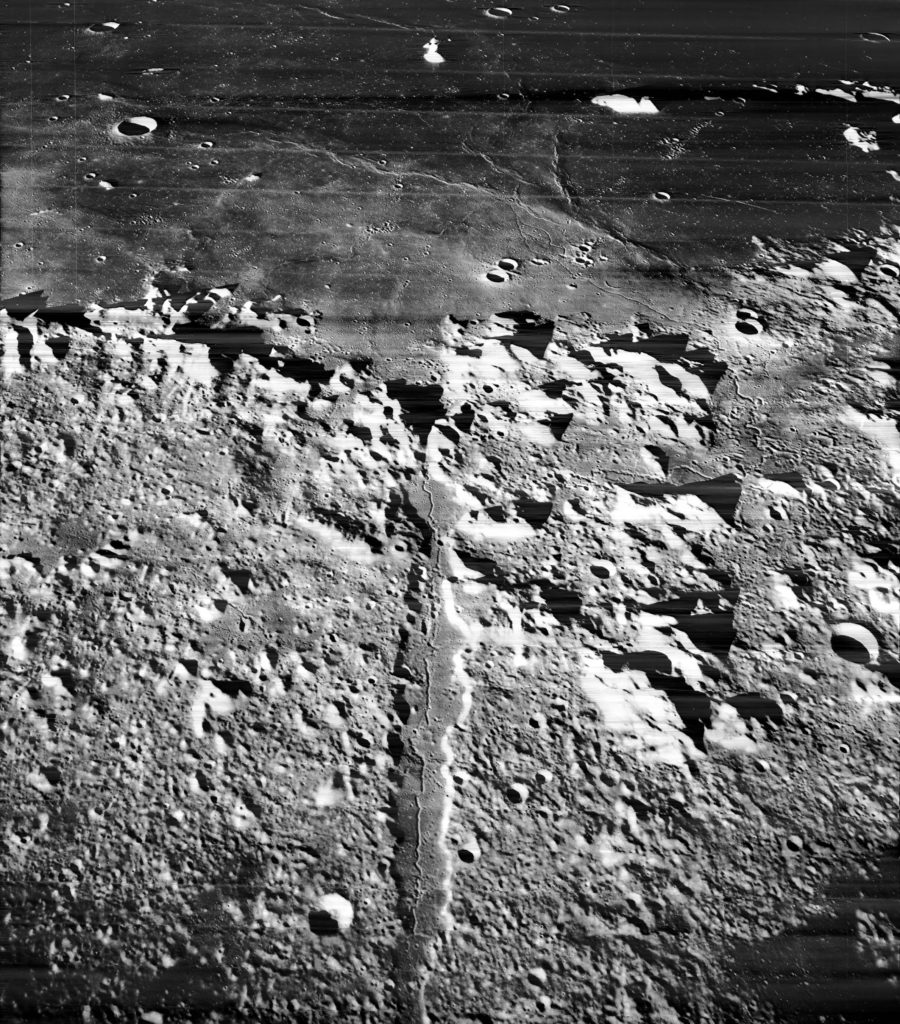
The Vallis Alpes
If you have a small telescope this can be a fascinating object to study when the Moon is in phase and the shadows of the mountains and craters are cast on the Moon’s surface. This fascinating jagged valley cuts straight through the Alpes or better known as the Lunar Alps.
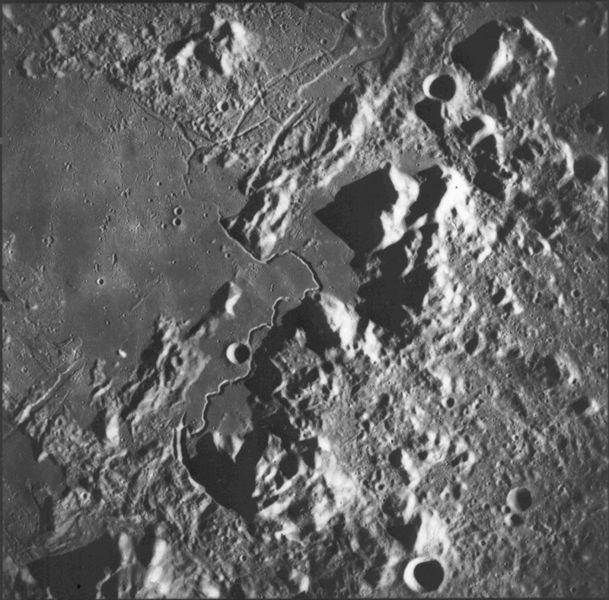
Hadley Rille
If you have a larger telescope, take a look at the area of the Moon explored by astronauts on the Apollo 15 project. If the conditions allow under high magnification, try to spot the wiggly line running along the valley floor.
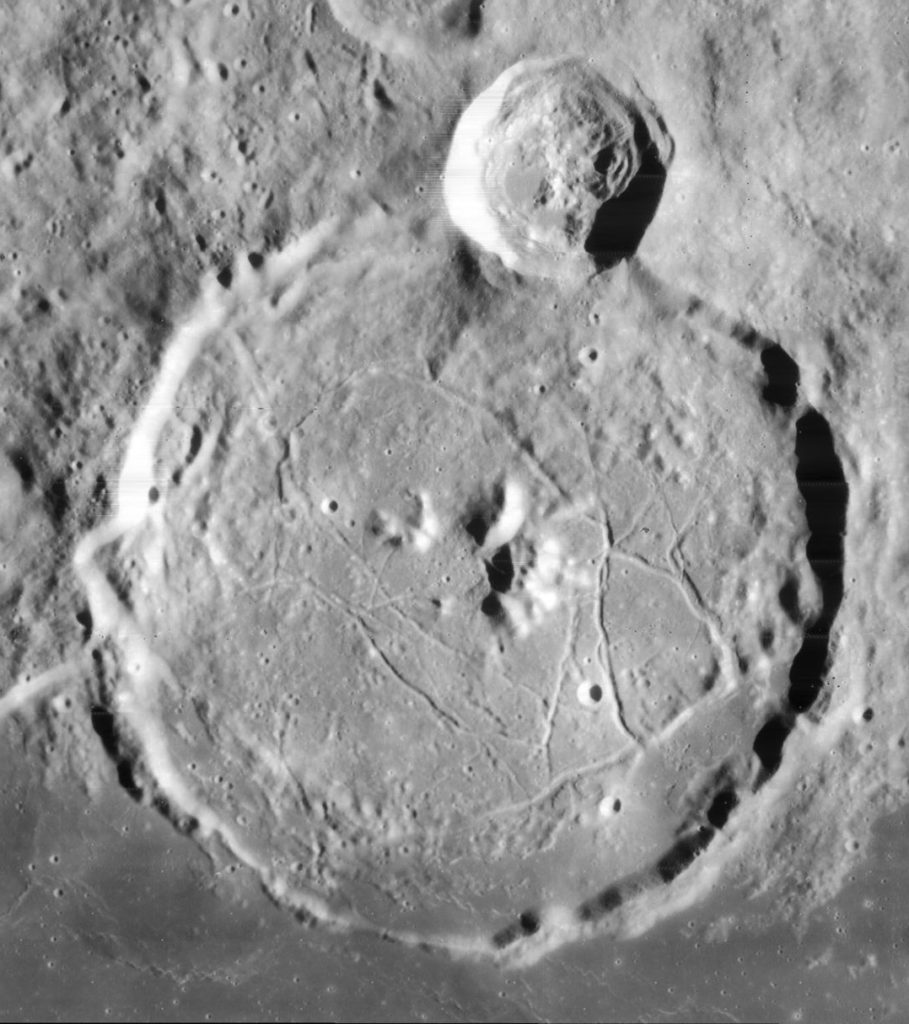
Crater Gassendi
Craters can be fascinating objects to study when the Moon is in phase, as the crater’s rim can cast shadows on the lunar surface. You may even be able to spot rilles (they look a bit like veins) running along the floor.
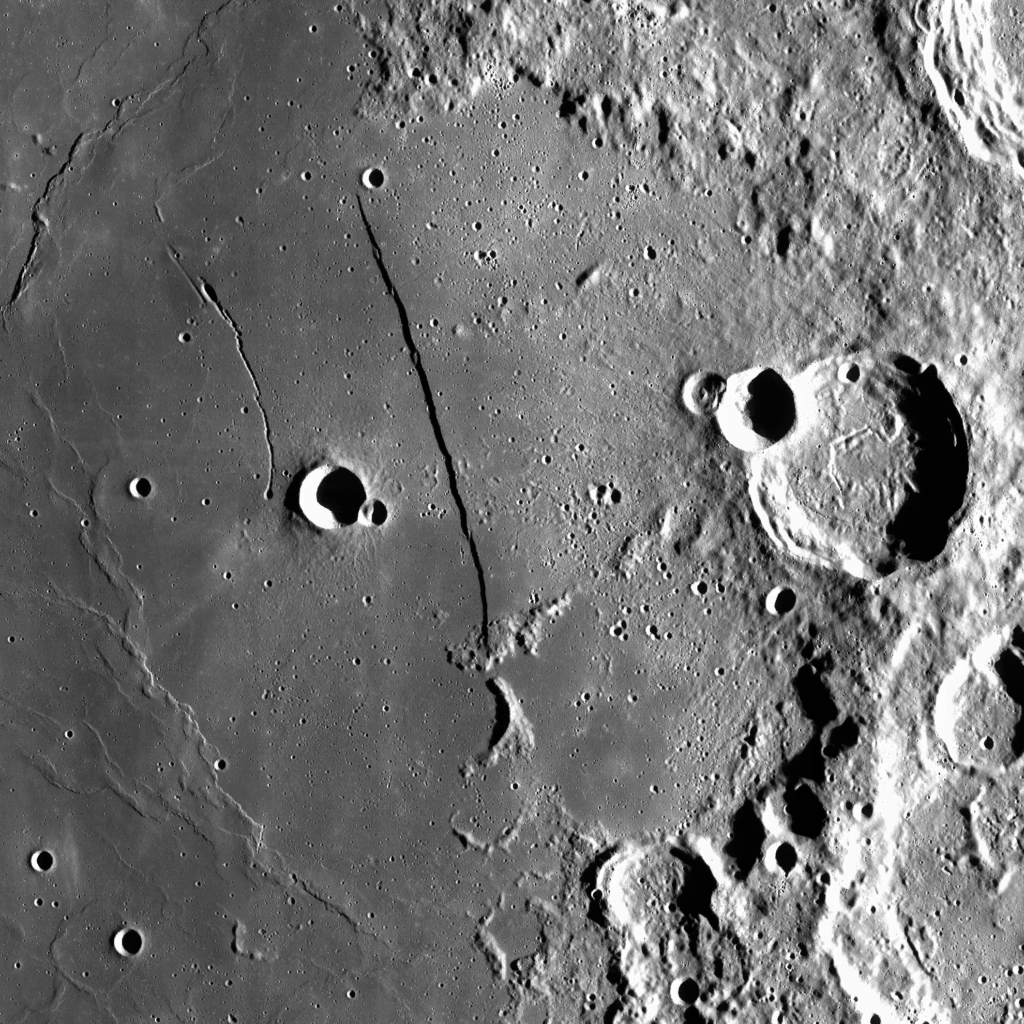
Rupes Recta
Rupes Recta is a fault line that runs for 110km along the lunar surface. The shelf is over 270m high and it also known as the Straight Wall. The crater that is situated halfway along the Straight Wall is crater Birt.
Look for the fork-shaped constellation of Sagitta and above that, a two-star constellation called Vulpecula. Look in between the constellations of Vulpecula and Sagitta and raise your binoculars to your eyes. Slowly scan the sky until you see an upside-down coat hanger.
